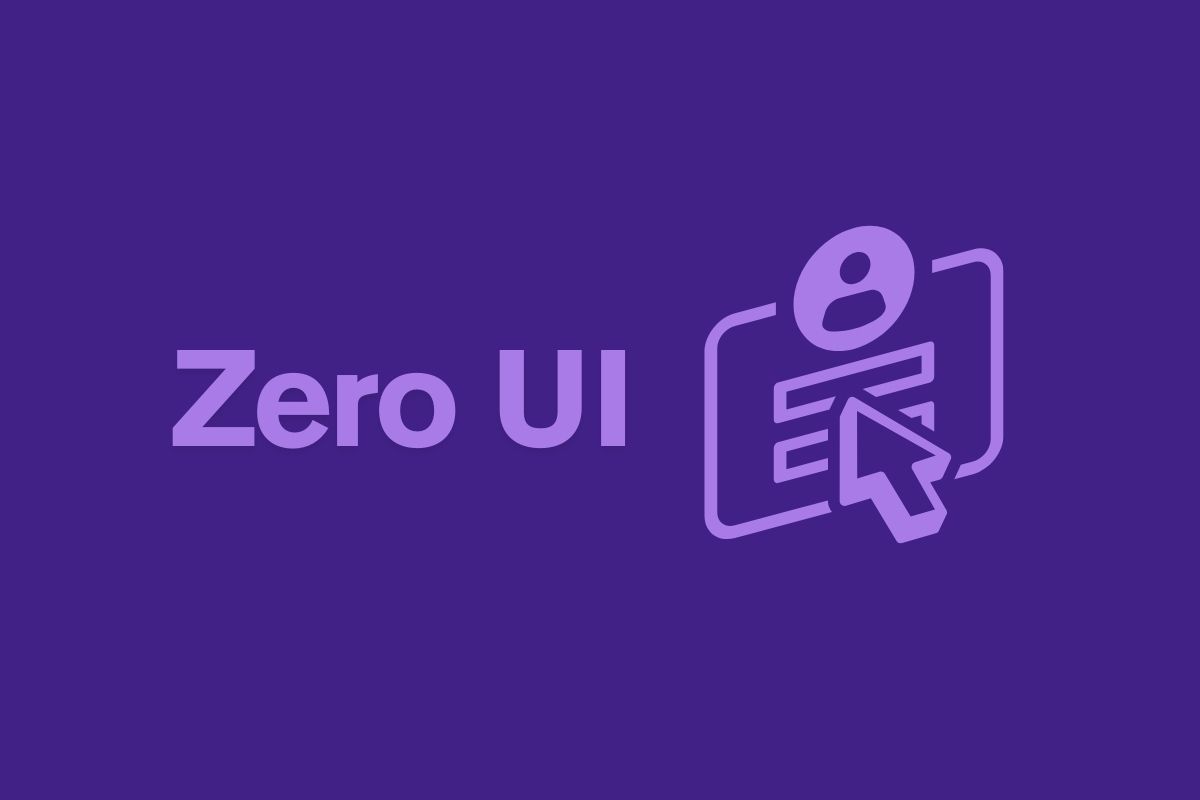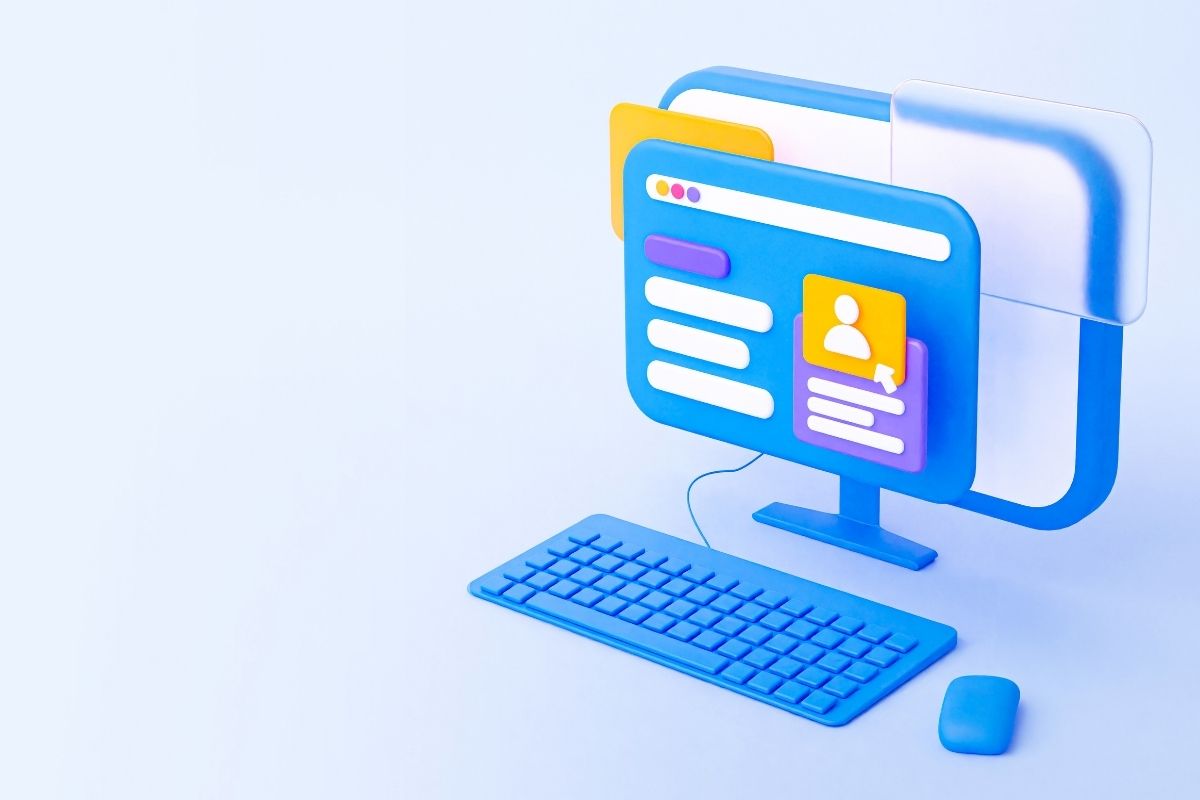The world of web design is continuously evolving, with new trends and technologies emerging every year. One such innovation is Zero-UI, a concept that focuses on creating websites without traditional user interfaces (UI). Unlike conventional websites that rely on buttons, menus, and other visible interface elements, Zero-UI takes a more seamless, invisible approach to user interaction.
In this article we will understand the concept of Zero-UI, its potential impact on web design, and how it might shape the future of websites and user experiences.

What is Zero-UI?
Zero-UI is a design approach that eliminates visible user interfaces from a website, creating a seamless, intuitive experience for users. Instead of traditional UI elements like buttons, menus, or forms, Zero-UI websites rely on other technologies, such as voice, gestures, and artificial intelligence (AI), to enable interaction.
Rather than requiring users to learn how to navigate a complex interface, Zero-UI allows for natural interactions, such as speaking to a virtual assistant or gesturing to control a device. This approach is inspired by how humans interact with the world—through speech, touch, and context.
How Zero-UI Works in Practice
Zero-UI is powered by a range of technologies that enable intuitive, non-traditional methods of interaction. Here are some of the key technologies and concepts driving Zero-UI design:
- Voice Interfaces
Voice-controlled websites and applications are becoming increasingly popular. Tools like voice assistants (Amazon Alexa, Google Assistant, etc.) allow users to interact with websites and applications purely through voice commands, eliminating the need for traditional UI elements. - Gestures and Motion Detection
Gesture-based interactions, such as swiping or pointing, are also central to Zero-UI design. Using motion sensors or cameras, websites can detect user gestures and respond accordingly, creating a hands-free experience. - AI and Machine Learning
Artificial intelligence plays a key role in Zero-UI by learning from users’ preferences and behaviors. Through machine learning, websites can adapt to individual needs and provide a personalized experience without requiring users to manually navigate through options or settings.

The Benefits of Zero-UI for Websites
Zero-UI offers a variety of benefits for both users and businesses. As the design trend continues to evolve, here are some key advantages of adopting Zero-UI for websites:
- Improved User Experience
By removing the need for visible interfaces, Zero-UI creates a more natural and immersive experience. Users no longer need to worry about navigating complex menus or interfaces—they can simply interact using voice or gestures. This simplicity leads to greater ease of use and higher satisfaction. - Accessibility
Zero-UI can also make websites more accessible to people with disabilities. For example, voice interfaces allow users with limited mobility or vision impairments to interact with websites more easily. Gesture-based controls also offer more accessible alternatives for people who may struggle with traditional input methods like a mouse or keyboard. - Streamlined Design
From a web development perspective, Zero-UI simplifies the design process. Without the need for buttons, menus, and other visual elements, designers can focus on creating clean, streamlined layouts that enhance usability and reduce clutter. This leads to a more elegant and efficient website design. - Future-Proofing
As technology continues to advance, Zero-UI is poised to become the standard for future websites. By embracing this trend early on, businesses can stay ahead of the curve and provide innovative experiences that set them apart from competitors.

Challenges and Considerations with Zero-UI
While Zero-UI offers exciting possibilities, there are still some challenges and considerations to take into account:
- User Adaptability
Although Zero-UI offers a more intuitive experience, not all users may be comfortable with voice commands or gesture-based navigation. It will be important to ensure that users can easily adapt to the new interaction methods without feeling frustrated or lost. - Technology Limitations
Zero-UI relies on technologies such as voice recognition and AI, which may not be fully refined or universally accessible. Developers need to ensure these technologies are integrated smoothly to avoid errors or misunderstandings. - Privacy Concerns
With voice interfaces and AI-based features, privacy and security become critical considerations. Businesses must ensure that users’ data is protected and that AI systems are transparent about how user information is being used.
Zero-UI is revolutionizing web design by removing traditional interfaces in favor of more natural, intuitive interactions. As voice, gesture, and AI technologies continue to improve, we can expect to see more websites adopting Zero-UI principles to enhance user experience and streamline design.At WebDev200, we are always looking toward the future of web design and are ready to help businesses stay ahead with cutting-edge solutions. If you’re interested in creating an innovative website that incorporates Zero-UI or other advanced technologies, contact WebDev200 to get started.

